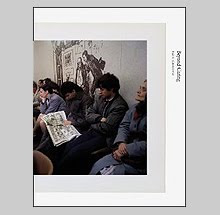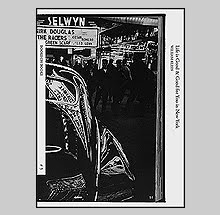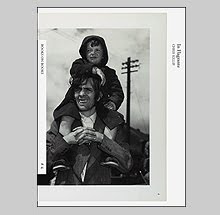Here Comes Everybody by Chris Killip

Chris Killip is not an easy man to predict. His follow up to his first book, Isle of Man - a lyrical portrait of his homeland - was an unexpected molotov cocktail thrown in the face of the political establishment, In Flagrante. Almost twenty years later arrived Pirelli Work which some saw as an extension of the same Northern English community now engaged in the long desired employment after a decade of humiliation. His newest book, Here Comes Everybody, departs to attend the annual pilgrimages to Croagh Patrick and Mamean in the west of Ireland.
For many, the modern enactments of ancient religious rites such as pilgrimages can often seem more observant of the familial tradition to participate than the goal of observance or serving penance. Where as Saint Patrick's ascent on Cruach Phádraig was followed by his reputed forty day fast, the discomfort today is offset by snack food and mylar blankets - small comforts should the journey become taxing. It can be a festive outing cloaked in seriousness. The usual penance - a scuff on the ankle after a slip on the shale.
Through Killip's images, both can be found. The hardcore penitent that walks barefoot up the steep slopes covered in loose rock to the family struggling with grouchy children in tow. The contradictions of past and present abound with many pilgrims carrying wooden staffs to assist in their journey like Saint Patrick while the modern accoutrements of Addidas trainers are more assuring of steady footfalls.
Killip has been photographing these Catholic pilgrimages in color and black and white for a dozen years starting in 1993 and initially thought it 'not his territory' until a visit with his mother in the Isle of Man revealed that he was one quarter Irish. The bigotry against Catholicism his mother had endured had stifled all discussion of her childhood or origins until then. By familial ties, these pilgrimages and community would become his 'territory;' a call to explore these rites from which he had always been distant.
Stylistically there will no doubt be naysayers who see Killip's turn to this calmer subject and his addition of color as problematic when compared to his past work. This is not In Flagrante with its exploration into tension and frustration, nor should comparison be made. Here Comes Everybody is a turn from the outward gaze inward. As Isle of Man was a loving portrait of homeland, Everybody is an exploration back into family but a family he never knew he was linked. Photographers have flocked to these pilgrimages for "good" pictures and at times almost outnumbered the participants but this album seems to have been conceived to make these rituals a part of his own life. This book is a facsimile of a photo album he made and dedicated to his mother who died at 86 years of age in 2008.
Killip's discovery of landscape and tradition is felt throughout. Fences of loose rock piled to delineate property or path are described with the same eye towards beauty as the pastoral views and fog shrouded mountain tops. His pilgrims ascend in small groups and pause in a landscape so idyllic that they teeter on the purely romantic. This is where his construction and sequencing become the most important element holding this book together. His juxtaposition of black and white and color slyly keep us jumping back and forth from past to present, from old tradition to new, preconception and reality. His penitents in their misty struggle upwards are faced on opposite pages with clarity and heavenly crisp light. 'A fiction about metaphor' as he has said of past projects is at work here too.
My full engagement with his journey is unfortunately slightly belied by the quality of the production - the publisher Thames and Hudson hasn't shown full effort with this book. Chris's other volumes have been exquisitely produced where the richness and quality strike the viewer immediately but here printing and poor choice of line screening tarnish his efforts. Like some of the pilgrims, Killip's long awaited achievement has come down from its journey needing a band-aid. Perhaps the very affordable limited edition in which every photo is tipped onto the page in true photo album fashion will allow a fuller realization of this project.
At the end of Here Comes Everybody, Killip relates a story from childhood of returning home early one day from school and discovering his mother playing a piano and smoking. Surprised, he said, 'I didn't know that you smoked or that you played the piano.' Her response was, 'There are a lot of things in this world that you don't know. Now, why are you home?'
There were indeed many things he didn't know which may have been why he turned to photography. This exploration may also be another question that he is asking of himself upon his discovery of Irish roots - Now Mr. Killip, why are you home?











